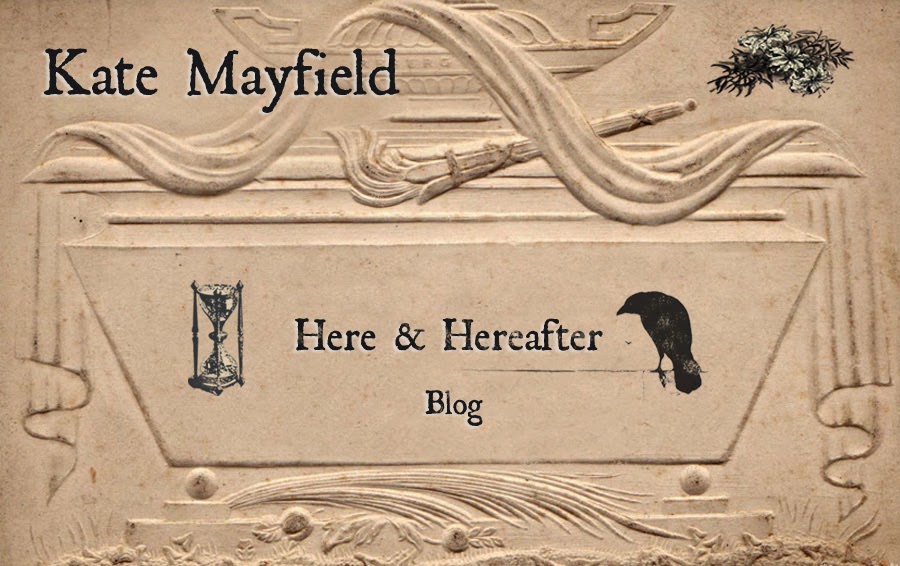A SHROUD STORY
When I recently gave a talk in
Birmingham in the newly restored Coffin Works Shroud Room, I became engulfed in
a beguiling sense of synchronicity. I grew up in a funeral home. My father was
an undertaker in a small town in southern Kentucky and that means that most
mornings, before I skipped off to school, I could be found peering into a
casket in which the deceased was dressed in a shroud.
When I left Kentucky and went abroad
for the first time, I didn’t go to London or Paris, like most Americans. I
landed on the shore of the Nile in Luxor and crossed that ancient river by
ferry to the Valley of the Kings, the burial ground of all burial grounds.
Enamored with the ancient Egyptians’ burial practices, I learned about the single
length of cloth used to wrap around the body of the deceased.
These shrouds were sometimes
inscribed with the name of the deceased, whole chapters from The Book of the
Dead, and spells, like this shroud, inscribed with spell number 64:
In 680 BCE this
netted, beaded shroud was created for an Ancient Egyptian mummy.
The arms of the
net are tubular faience beads.
The word
"shroud" originated in fourteenth century England to describe the
clothing used to dress or wrap a corpse prior to burial, derived from older
words scrud meaning garment and screade
- a piece or strip of fabric.
The early shroud contained the
decaying corpse and covered the body. During the eleventh century, ordinary
people would have clothed their dead in a loose shirt before wrapping them in a
sheet, sometimes wound tightly with extra bands of cloth - a winding sheet.
The sixteenth-century shroud, a
length of linen or plain wool, like the one seen here on John Donne in his
funerary monument was also tied at the head and foot.
Donne’s effigy at St. Paul’s
Cathedral was the only statue to survive the Great Fire intact.
In his final
sermon in 1630 at Whitehall, Donne’s spoke these words:
"We have a
winding sheet in our mother's womb, which grows with us from our conception,
and we come into the world wound up in that winding sheet, for we come to seek
a grave.”
In the United States, there is no
doubt that the homemade shroud was a significant part of 19th-century burial
customs.
Notices for meetings of “Shroud
Committees” or “Ladies’ Shroud Sewing Societies,” where charitable ladies made
shrouds for the poor were listed in the newspapers. There are many news
articles about elderly ladies buried in a shroud made by their own hands
decades earlier. Women from the 16th through the 19th century would sew their
own burial clothes when making their wedding trousseaux because women were so
likely to die in childbirth.
In the mid 20th century
the Shroud Room of the Newman Brothers Coffin Works buzzed with the hum of the
Singer sewing machines.
I imagine these ladies talking about
their children, or their plans for the weekend. I imagine the shrouds boxed up,
ready for delivery.
Today in the Coffin Works’ newly
refurbished Shroud Room there are splendid spools of brightly colored thread
and shelves filled with bolts of fabric.
While the shroud makers at Newman
Brothers kept their fingers busy, a woman who lived far away from Birmingham on
a farm in Kentucky needed a way to earn extra money. She was quite a good
seamstress, a fact that a lady in a haberdashery recognized, and she suggested
to the farmer’s wife that she consider making burial shrouds.
In this small, seemingly sleepy
southern town where the town square has not changed for decades and where the
funeral business is fiercely competitive, as a child I waited anxiously on the
swing on the veranda of our funeral home for the appearance of the woman I
called the Shroud Lady. She opened her green cardboard boxes to reveal her hand
sewn shrouds, similar to this.
She sold shrouds
to my father for many years until one day an elderly woman decided she wanted
to be buried in her own clothes and thus changed a long held burial practice in
our town. And there you have it, from the north of England to the Southern
United States, a shroud story.
















No comments:
Post a Comment